
Life Lessons from The Mind Game (Part 1)
Have you ever wondered how you can get from where you are now to working your way to your ideal business in 6 months’ time?
Well, I’ve built more than six businesses, each making millions over and over again, and I have studied success for the past 20 years. During that time, I have seen enough patterns to recognize there’s a formula to success.
The formula is not elusive, and I’d like to share the step-by-step details of this formula that I talked about in my program called The Mind Game, which has sold over 50,000 copies worldwide.
What you’re about to read is the first in a 2-part series about the critical first days of the Mind Game course, which I am openly sharing with you to get you started on the deep dive that I believe is required to onboard with your own critical path to help you achieve both your personal and professional results.
Each lesson here from The Mind Game course is planned out in a specific way to build on the previous one. It is only when you look back that you will be able to see that there was actually a reason why we did each lesson in the sequence that we did it.
Each lesson is also designed to be consumed once per day. So read each lesson, practice it, then return the next day for the next lesson.
Let’s get started!
Lesson 1: Success is Not Magic
Success is not magic, but a formula that can be applied through consistent effort and dedication. It involves interconnected thoughts, behaviors, and results. To achieve success in business, it’s important to form new habits and to use money as a gauge of progress.
The 66-day rule is a useful tool for habit formation, as it takes approximately 66 days to form a new habit. That’s why I’ve created 66 lessons within The Mind Game to act as a short daily focus on your success. By following this formula and consistently applying it, individuals can achieve success in their personal and professional lives.
The Universal Law
Thoughts -> Behaviors->Results
So start where you are and grab a notebook to take some notes!

Lesson 2: What Does ‘Finished’ Look Like to You?
Defining What Does ‘Finished’ Look Like? becomes crucial when setting goals, as it allows for bigger and more ambitious targets. Looking at the end result helps provide a clear vision and guide for where you want to go in life.
This is the first of a few lessons that are going to lead to ultimately setting your goals and making it clear in your mind about what you need to do to reach those goals. This is your starting point, and you can begin to very clearly see where you are heading. Just start where you are! I know it seems fine for me to say, but I also realize that everyone is in a different situation.
Even if you can just think about one little thing that you can do to get you moving forward, given your personal situation, that’s better than nothing, and that’s absolutely okay. So when I’m thinking about ‘what does finished look like’, I prefer to think about it through directional focus.
Directional focus is a topic we’ll come back to later, but this is where you’ve got a point that you want to get to, which is somewhere far in the future in your life. It’s that directional focus that will ultimately guide you, because it’s hard to know how you are going to be pulled off course.

As long as you’ve kind of got this idea on the horizon of where you want to get to, you can keep heading in that direction, and it won’t matter what challenges come your way. When thinking about directional focus, I‘d like you to think bigger and 10x your goals.
We’ll talk more about this when we get to the topic of vision a little bit later, and also, to keep the time frame in mind, when you are thinking about where you would like to get to, it becomes much easier, and perhaps more powerful, if you look at that through a longer lens.
For example, if you say you’ve got a six-month goal of achieving something, just compare that to what you could potentially achieve in ten years. Ten years is a much longer lens. It’s a much longer time frame. You’ll notice that your goals can naturally be so big over a longer time frame. So when thinking about ‘what finished looks like’, this is really, at this point, more of an aspirational goal, like ‘What would your ideal lifestyle be?‘
Now, for me, my vision is summarized as: lifestyle freedom and memorable moments. Those five words are the essence of my entire vision for my life and what I want to be able to provide for my family. These five words, ‘lifestyle freedom and memorable moments’, mean so much more to me than just those five words.
I could talk for hours about every little part of the vision and how that connects up with the things that I care most about: my family, my friends, my health and wellness, my business—all areas of my life are encompassed in that, and I’ll talk more about that later.
What I want to share now is an example of ‘What does finished look like?’. I might say, ‘finished is to have complete freedom, to wake up without an alarm, to go for a walk by the beach, to stop for coffee, to do a couple of hours’ work in the afternoon, and to have complete financial, time, and geographic freedom.
Now, this is just an example for me personally. ‘What finished looks like’ is being able to live life on my terms, being able to wake up in the morning, go down for a swim in my own private pool, and have complete freedom to spend the rest of the day doing whatever I would like to do.
So it might be spending an entire morning or an entire day with my kids. It might be deciding to go off on some adventure somewhere. It could be anything! The point, though, is that I’ve got the freedom and the means. By that, I mean the time, the finances, and the ability to move around geographically to actually do it. That’s what my ‘finished’ state looks like.
So the action item for this lesson is to use a notepad or a digital notepad, like a Word document, or a Google document, or any piece of paper that you have lying around, and start writing down a very short paragraph, just two or three lines of ‘what finished looks like’ for you, and trust in the process. This is the second lesson here.
If this feels a little bit unusual to you, don’t worry, because there’s so much more that we’re going to be diving into that uses this foundation as we continue to push forward here.

Lesson 3: Reverse Engineering Behaviors
The overriding rule that guides The Mind Game process is that your thoughts lead to your behaviors, and your behaviors lead to your results, so if we can think a little bit about the behaviors that you need to start incorporating into your life, then you’re going to have some of the different parts of the recipe that you’re going to need to have a much more successful life. This is the next step in the plan.
As I’ve been saying, you need to trust in the process and follow through. In a few lessons, you’ll see how it will be very useful to look back on this when we are creating our specific goals to really have much better goals and goals that are going to allow you to do so much more with whatever it is that you want to be focused on.
So what do successful people actually do? Now, if you don’t know the answer to this, then you can ask yourself a question: What would such and such a person do? I might ask, ‘What would Steve do?’ for example. Or, what would someone else who is very successful that you may know or know of do in a certain situation?
The good news here is that while there is a recipe for success, it’s pretty fuzzy in that you can work in a lot of your own different success hacks and habits along the way. Again, as always, you want to start with the present moment.
If I look at what I do on a daily basis—and again, I’m not saying that you need to incorporate any of this into your life—as an example, I get up bright and early in the morning. Sometimes it’s 5:30, sometimes it’s 6 a.m. It’s always before the rest of my family wakes up, and I go through a quick 10-minute meditation and a quick read through some affirmations that I’ve written. You’ll see how these are not what you think of when you think of affirmations.
My affirmations are more like reminders than affirmations and a quick meditation in the morning. I also like to swim or workout early in the morning to really activate my body and get going, then I get into my work. I have quality time with my family in the morning as well. I’m pretty thankful for that. But then I get into my work with discipline and focus on what I want to be doing.
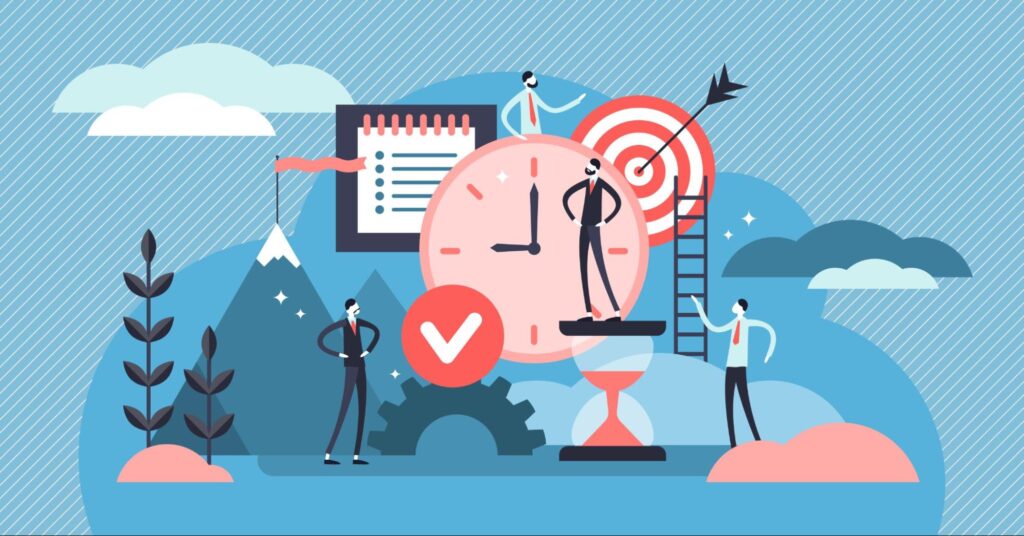
This discipline and focus and the tasks that I’m working on are things that I’ve already thought about the day before, and I’ve had them noted down on a piece of paper in my little notebook from the day before, and I get into my work. Some days I finish up at midday.
Other days, I work right through until 4pm or 5 p.m., but I make sure my list is finished so I’ve got quality time left in the afternoon and in the evening to spend with my family. That’s a very high-level look at some of the things that I do in a day.
If you start diving down into what other people do, you’ll see that there are similar habits and routines that the most successful people have. For example, a lot of successful people that I know are people who wake up early. You don’t have to get up early. If you’re a morning person, that’s absolutely fine.
I think the point is to be aware of when you do get your best work done and work that in as a behavior, and not just when you get your best work done, but times during the day that you can set aside to have very focused work, having a mental reset of some kind.
Surrounding yourself with smart, supportive people is another thing that the most successful people I’ve met do. In this day and age, this doesn’t have to be something that’s physical; it can be virtual. So some of the smart and supportive people that I know and hang out with tend to live on the other side of the planet. But thanks to technology these days, we have plenty of connections virtually. This is something a lot of people do.

Fitness: different types of fitness—even just going out for a walk—is fine; having discipline and making sure you’ve got enough energy and sleep are the behaviors of most successful people.
Constant upskilling and becoming a sponge for knowledge—these are all things that I’ve also seen some of the most successful people do.
Now, if we go back and look at cause and effect here, if you said in the past lesson, when we were thinking about ‘what finished looks like’, if you said that you wanted to have freedom, what is that to you? To wake up without an alarm clock? To go for a walk by the beach, to stop for a coffee, to do a couple of hours of work in the afternoon?
To have complete financial time and geographic freedom, you will probably need to have a mostly automated income stream, or just a load of money in order to fund this lifestyle.
To achieve this ‘finished’ state, you need to be focused, dedicated, disciplined, action-oriented, strategic, and 100% committed to achieving the goal. This is what we’re thinking about in this lesson. These are the behaviors. These are the things that I want you to start thinking about, and again, there’s plenty of room for margin here.
There’s plenty of room for you to think about this for yourself. You don’t have to use things that I’ve just mentioned or talk about falling into some specific structure here. This can be completely molded to fit you and your lifestyle.
So the action item for this lesson is that now that you’ve got an idea of what your desired end result looks like, it’s probably still a fuzzy idea at this point because we haven’t really drilled down to specific goals. We’ll get to that in the next few lessons. What I want you to do is list out a set of behaviors that you think align with the result. So it might be staying focused. It might be getting a good night’s sleep. These are the types of things that you could be writing down here.
It may seem trivial to do this or to go through this exercise, but what we’re trying to do is bring some of this awareness to you and to bring the types of behaviors that are congruent with success to the forefront of your mind.
So, how are you going to behave? How are you going to need to behave in order to achieve your goal? You can also use some of the examples that I’ve just been through here—some of the ones that resonate with you. You don’t need to fall into a specific structure here.
This process is designed to be moldable, and it’s designed for you to come up with whatever you think is important to getting you moving towards your goals. Remember that thoughts lead to behaviors, and the behaviors lead to your results.
The goal is to bring awareness to the types of behaviors that are congruent with success and to mold them to fit your own lifestyle and goals.
Next, we’ll be going to go back one step further and start thinking about some of the thoughts.
Lesson 4: Reverse Engineering Thoughts

I hope you’re enjoying what we have been going through so far by just scratching the surface. There’s so much more that we’re going to get to, and we’re going to get into more tangible, specific tasks and action items.
Now, what I want to do now is talk about thought and come back to the overall underlying rule that your thoughts lead to your behaviors, and your behaviors lead to results. The focus in this lesson is on the first part of that: my thoughts.
Thoughts have a cause-and-effect relationship—the things that you think about and other things that come about. The whole purpose of this lesson—there’s not going to be any action for you to take here—is just to allow you to build more awareness and become more conscious of how thoughts are going to impact your behaviors.
So the question is: how can we challenge ourselves to think about what thoughts could lead to positive behaviors, like getting up early, if that’s important for us? Understanding the reasons why a behavior is important can help us adopt it.
For example, let’s say that you’ve identified a behavior that you need to start adopting, and that behavior might be laser-focused on your goals and objectives. What I’d ask you to think about is: What are the thoughts that could lead you to have such focused behavior? What other things could you start thinking about throughout the day or be more aware of that would encourage you to have more focused behavior? One idea here might be to get more clarity around your goal.

So if that’s what your goal is, maybe that’s going to help you stay focused, and you’ve got a very vivid picture in your mind (and we’ll talk more about this in the next lesson on what your goal is), then maybe this is going to help you stay focused and show that focused behavior on a daily basis.
If you think about one of the other sorts of items here that we identified, rise early. Now, again, rising early is not for everyone. It’s just an example.
But if, in your case, you’re like me and you’re a morning person and you need to get up early or feel like you get good work done when you get up early, then what do you know? What thoughts could help you get up early? What thoughts could lead to you actually doing that on a daily basis?
Perhaps understanding what’s at stake and perhaps really having a really strong reason why that might be a good thing to start thinking about to enable yourself to then build that behavior into your life.
Again, as we’ve been saying throughout the first few lessons, just start where you’re at. I mean, if this all sounds a bit foreign to you, that’s absolutely fine. Doing something that’s better than doing nothing is fine. This lesson here in particular is really about building awareness rather than doing any tasks at this point.
This awareness will ultimately help us to be focused, dedicated, disciplined, action-oriented, strategic, and have hundreds of achievement goals. You need to be thinking about achieving your vision, your objective, or your goal every day. Keep it at the forefront of your mind so that you can consciously, subconsciously, and unconsciously maximize your awareness and mentally prepare yourself to blast through any obstacles that may come your way—to get your mind working in 100% congruence with your body.
Lesson 5: Visualize Something Bigger
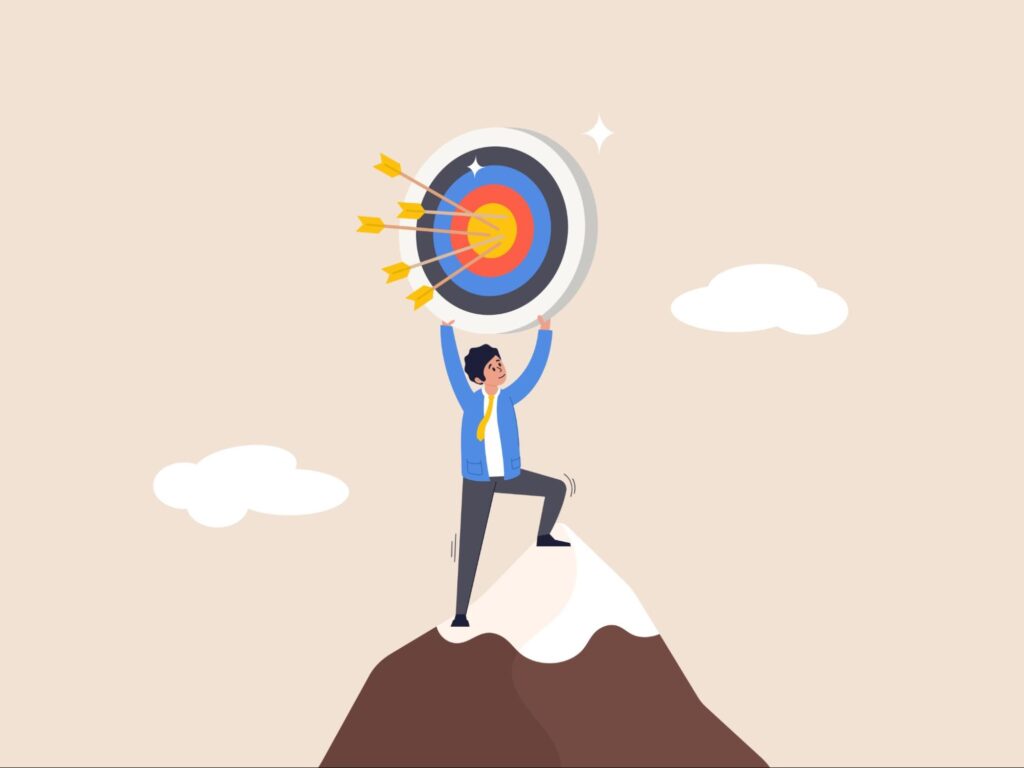
We’re now on lesson five, and what I want you to start thinking about and visualizing is something bigger than your current reality. Henry Ford has a quote that I come back to and think about all the time, and I feel like it’s 100% accurate. ‘Whether you think you can or you think you can’t, you are right”, because again, we know that thoughts ultimately result in your behaviors, and your behaviors lead to your results.

So in this lesson, I would like you to start thinking about something a little bit bigger. The reason for that is because if you can’t think about something bigger, if you can’t think about something more, then you’ll never have that ‘something bigger’. Again, as always, start where you are.
What we can learn from children is that they have an almost unlimited, completely unshackled imagination. In fact, I was speaking to my son a couple of days ago, and he was talking about a spaceship being able to go to the sun. It’’s a lot of fun when you start thinking about those things. You can let your imagination run wild with the exercise that we’re doing here.
Tap into your imagination and think beyond your current reality, as your subconscious can’t tell the difference between reality and imagination. I know it can feel a little bit odd when you start letting your imagination run wild, but again, there is a method to the madness, and there is science behind all of this.
Now, your subconscious can’t actually tell the difference between reality and things that are imagined. It’s a fact. But one example that I can give you here is if you just imagine for a moment that you are biting into a big, juicy lemon. If you just imagine that for a few seconds, you’ll probably start having different feelings inside your mouth right now. I’m salivating just with the idea of that, but that’s a trigger that has come from my imagination, and that’s really what we’re trying to capture here with the work that we’re doing.
This is why I like to visualize at least a bit every single day. It keeps my mind sharp, and it keeps my mind focused on where I want to get to.

Then, if you’re going to take the time to visualize, you may as well overdo it. Steve used to own a boat, and the name or the slogan or whatever it is on the boat was ‘If it’s worth doing, it’s worth overdoing’, and that’s something that we’ve applied to our business. (Steve Clayton is my business partner.)
So you may as well think big, because even if you don’t reach all the goals that you want to reach, you’ll get a lot closer to them. If you’re thinking of it bigger, most people overestimate what they can do in one year but massively underestimate what they can do in 10 years.
They don’t just underestimate a little bit. They underestimate a huge amount. That’s why I often speak about setting yourself up with a longer lens and looking at your life and where you want to get to in a longer timeframe, because it enables you to think so much bigger and gives you more time to achieve whatever it is that you want to achieve. With this exercise, it’s completely fine to be unreasonable.
I’ll give you a personal example. In 2008, I came up with the goal of owning 20 properties outright by the year. This is pretty ambiguous because, what is a property? How much is a property worth? In my mind, at that stage, I was looking at properties that were $300,000 to $400,000, and I wanted to own these outright rental investment properties.
So this was an idea that I came up with in my mind because, like a very far-fetched goal, something that was way beyond the realm of my possibility.
But by giving myself around 10 years to achieve that, it enabled me to start thinking about that and to start thinking about what the passive income would be from 20 different properties that I would own, what would my net worth be from that, and so on and so forth.
Ultimately, I was able to get to that goal. In fact, I got there six years early. In 2014, I already had 20 properties that fit that criteria and were worth that kind of money, and still today, they provide me with an amazing passive income stream.
But if I hadn’t thought a bit bigger about that, if I hadn’t, if I just said that I wanted to have a couple of rental properties, I probably would have just had a couple of rental properties. So I think when you allow yourself to start thinking a little bit bigger, something magical can happen, and you begin to imagine what you could potentially have.
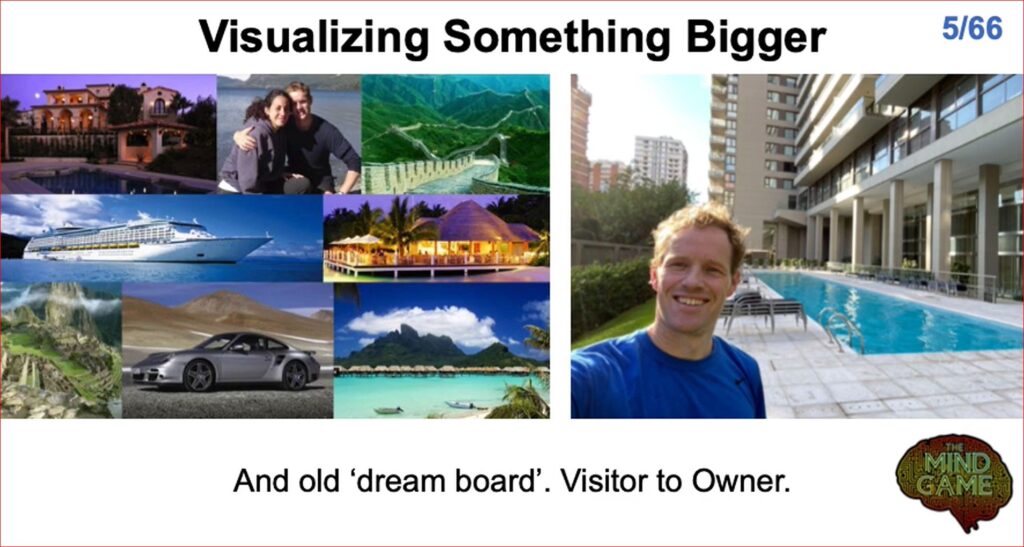
This is a dream board that I came up with in about 2008–2009, and I put photos on a dream board of some of the things that I ultimately wanted to have in my life.
To create my dream board, I did a few Google searches, and I found a picture of a beautiful Mediterranean home that I thought I would like, with a swimming pool. It’s just beautiful, and you can see it in the image above. I put a photo of me and my wife, who was my girlfriend at the time, doing something that we loved doing.
In one picture, we are camping in the south of Argentina. I put a photo of the Great Wall of China that was to again capture my dreams of being able to travel everywhere, the same with Machu Picchu in Peru and with Tahiti. I think that the other photo is—I can’t remember right now—luxury cruises, some awesome cars, and things like this.
By going to the effort of doing this, I was able to capture some of these dreams and some of the things I wanted to achieve.
The other thing that I did way back in 2006 or 2007, when I was heavily in debt at that point—student loans and so forth—was to go with a real estate agent and not have a look at new apartments that were being built in these big, fancy luxury apartment buildings with all the amenities I could wish for.
At that stage, again, it was beyond my current reality that I’d ever be able to own such a thing. But fast forward to today, and I’ve got lots of those types of properties. I’ve got them all over the world, and it was because I was able to open myself up to being able to have those kinds of things.
That photo you can see on the screen is where I live at the moment. I live in the building just behind my head there, and I’ve got this amazing 25-meter pool that I use almost every day, and it’s just one of the best buildings in Buenos Aires.
Again, I couldn’t have afforded this at the time, and unless I first imagined it, I don’t think I would have ever been able to achieve it.
So I went from being a visitor in my early days in Buenos Aires to these places and feeling like a bit of an oddball because I was visiting apartments and properties, which at that stage in my life I wasn’t able to purchase, to being the owner and being able to buy almost any property that I wanted to buy.
So when you open yourself up to being able to think a little bit bigger, I think something really magical can happen.
What I’d like you to do here is to think about your current goals. We haven’t specifically defined a goal yet. We’ll do that in a couple of lessons, but you’ve probably got an idea of what you would like to achieve. It’s still a fuzzy idea, at least.
So for this lesson, your challenge is to 10x your goals, write down some things you would like to achieve, and actually think about these things in a way that is deliberately unreasonable. Deliberately thinking about your goals in this “unreasonable” way allows you to expand your mindset and explore new possibilities.
Use visualization techniques, such as creating a dream board, to capture your aspirations and make them feel more tangible.
So, for example, maybe you’ve got the goal of paying off your mortgage. Let’s ramp that up. How could that be so much bigger instead of just thinking about paying off your mortgage? It might be that you want to buy a home in cash for each of your five children, or whatever that might be, and be able to achieve that, or work one hour per week to earn $100,000 per month.
What would that look like? What kind of business would you need to be able to do that?
When you start asking the questions and thinking about them, you can start finding some of the answers to take the vacation of your wildest dreams next year. The vacation of your wildest dreams could span six months. It might start with doing a safari in South Africa and move on to being on a luxury 200-foot yacht with a private crew and the Mediterranean.
The whole idea is to start thinking a little bit bigger and beyond what you think about every day. If your everyday dream for a vacation is going to the local beach, which is a few hours away, then let’s elevate that goal and think about a $40,000 private yacht charter for seven days in the Bahamas.
I mean, that is actually achievable when you’ve got a business that can allow you to do it. So start to visualize something bigger and write down a couple of things that are just unreasonably big goals, and you’ll see why we’re doing that.
Lesson 6: Bolster Your Defenses
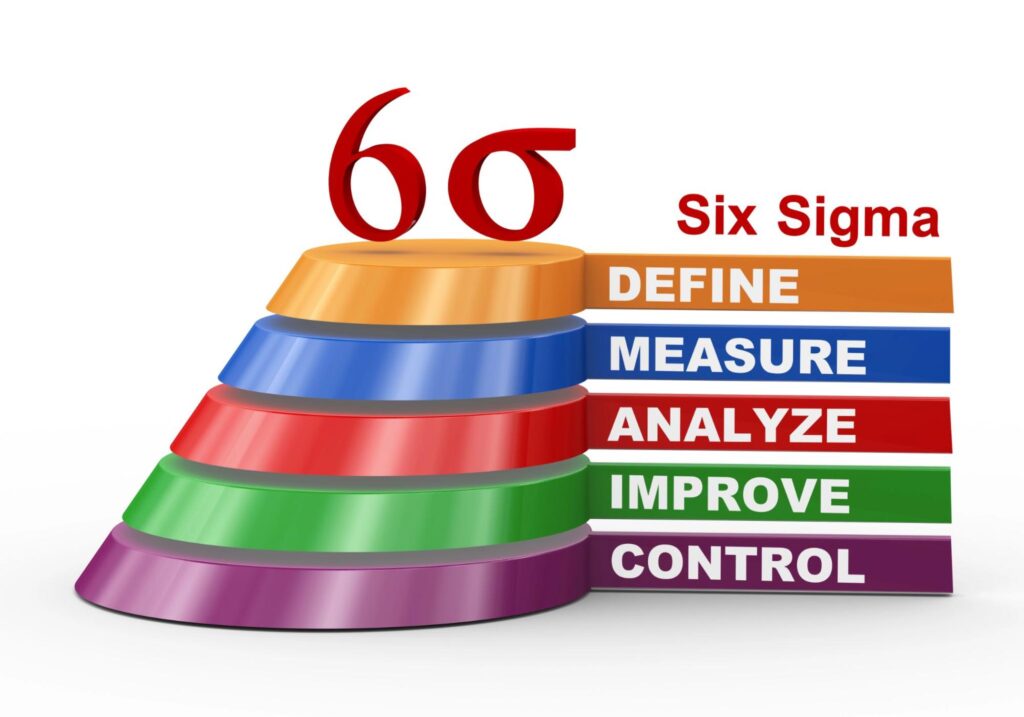
What we’re really trying to do in this lesson is get you prepared for challenges. There are curve balls that are inevitably going to come at you in any kind of project that you’re doing, and when these unexpected curve balls come at you, it’s about making sure they don’t completely derail your plans. So it’s about continuing to build awareness.
What I want to do today is try to help you find the real underlying reason why you want to do what it is that you’re setting out to do. One way that you can do this is by going several layers deep, using something called the Six Sigma process. The Six Sigma process was originally developed by Motorola. What it involves is asking yourself, ‘Why?’ five times. When you do that, the thought is that you’re going to get to the root of what really motivates you.
If you’re skeptical about any of this, I just urge you to trust the process, because this has been proven. Just work along with me, and you’ll see how this all comes together as we get more pieces of the puzzle here and in the upcoming lessons.
So bolstering your defenses, we’ve got a simple action item for you, and what I want you to do is to think back to what we discussed in the second lesson we were speaking about, what does “finished” look like, and ask yourself why you want to achieve whatever it is that you want to achieve, and still, this is still a fuzzy goal.
So, for example, if you had the goal of owning your own office, why would you want to own your own office? Maybe it’s so that you don’t have to rely on a landlord. Why don’t you want to rely on a landlord? Is it to have control over your future? Why do you want to have control over your future? Is it because if someone else controls it, you won’t be truly free to decide what you want to do?
So this is an example of asking yourself why multiple times. I urge you to actually put pen to paper for this one. You may not discover anything earth-shattering. It may just be a case that you get more clarity around what really is the underlying motivator, and that’s absolutely fine.
Now that weve had a look at how to reverse engineer your results by examining ‘what does finished look like’, becoming aware of how your thoughts and behaviors influence your results, and then visualising what you want with feeling, we can then start to look at the critical path to your success.
Look out for Part 2, where we’ll be diving further into the details of my full planning system, which builds on the foundation of Part 1 to drive your ideas forward to completion and success.
For more information, go to The Mind Game, where you can see all 66 lessons! What do you think so far? Comment below on any of your own techniques and ideas that help you succeed in life.




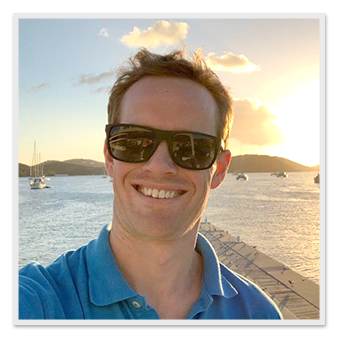


Oh my gosh, I absolutely LOVED this post! The Mind Game sounds amazing – I can’t believe I haven’t heard of it before. Sixty-six lessons? Sign me up! I’m totally going to try that ‘5 whys’ exercise tonight. And creating a dream board? Well, I’ve always believed in the power of visualization, but this takes it to a whole new level. I’m so excited to dive deeper into this and see how it can transform my life. Can’t wait for Part 2!